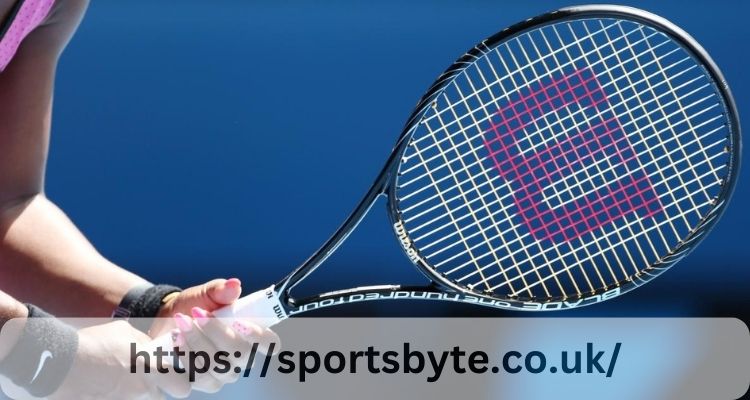All “adult” rackets can be divided into three types: amateur, club, and sports. At first glance, everything is simple. Amateur rackets are suitable for beginners. Club rackets are for tennis players with an average level of play, and sports rackets are for those who regularly compete.
In practice, everything is a little more complicated. If, for high-level tennis players, the choice is limited to only sports rackets (otherwise, the level of play and potential will inevitably suffer), then a beginner player is free to choose a racket in all three categories. In this article, we will tell you how to do it correctly.
(Source: https://bestsport.kz/p47100622-raketki-dlya-bolshogo.html)
Choosing the Right Racquet
The choice of a racket depends not only on your convenience but also on your results. If you like watching famous tennis players, you probably pay attention to their equipment. By the way, you can also make money on your knowledge using the 1xBet tennis betting online website.
But let’s get back to choosing a racket. You can’t just name a brand and model that suits everyone. The equipment selection is so individual that you will have to do it yourself. Below, we will list the main parameters that you need to pay attention to when choosing. And the final choice is yours.
Head Size and Shape
This parameter is measured in two units: square inch and square centimeter. In addition to the numerical designation, there is also a verbal one. Mid is a racket from 580 square centimeters to 630 square centimeters, MidPlus (or MP) is from 630 to 670 square centimeters, OverSize (or OS) is from 670 and more.
For a beginner, it is better to choose a head size of 100. This area will allow you to control the racket and hit the ball consistently at the same time. Rackets with a larger head size lose accuracy but help to make fewer misses on the ball (relevant for beginners). Rackets with a smaller head size hit more precisely, but there is a risk of breakdowns, hitting the ball with the rim. Therefore, it makes sense to reduce the head size if you have already mastered the technique well, have good game practice, and have good results in matches.
The string pattern is the number of strings along and across the racket. The distance between the strings determines the ability of the racket to better/worse catch the ball when spinning. A larger distance between the strings allows for better spinning of the ball. If the strings are located close to each other, the ball will fly off the surface of the racket strings faster. This arrangement places greater demands on the player’s skills.
Racquet Length
(Source: https://akwatoria.ru/myach/v-setke/v-tennise/)
The length of a racket is measured from the cap of the handle to the top of the head. It ranges from 27 inches (the most common) to 29 inches (the maximum length allowed in professional and amateur tennis). When choosing the length, it is important to understand the trade-off between reach and maneuverability. A longer racket will provide more reach, allowing you to hit the ball further away from your body. The downside is that longer rackets are generally more difficult to maneuver. Therefore, the choice of length depends on the playing style rather than the player’s skill level. The length of the racket is selected solely based on the height of the tennis player. Therefore, as a rule, it is only important for children’s rackets.
Racquet Weight
It is very important to choose a racket that you can control. Therefore, there is no point in chasing heavier rackets. Moreover, manufacturers now think about all customers and make a wide range of the same model with different weights. For girls, a racket weight of 260-285 g is suitable. For men, 285-315 g. It is important to understand that the heavier the racket, the more demands it places on the player’s physical fitness. For a beginner tennis player, playing with a heavy racket is more likely to lead to injury. Do you need it?
Choosing a racket for a child is even more important because if the child loses due to the wrong weight and size of the racket, he will not succeed in training, and interest in tennis will quickly fade. While the technique is being formed, it is better to play with lighter rackets so that each hit is easy and the child can master rotation (pronation) from an early age.
Balance
The racket weight can be shifted to the handle or to the head or be average in value.
- 310-325 mm — balance to the handle
- 325-335 mm — average value
- 335-350 mm — balance shifted to the head
Weight to the handle is the most optimal. Such a racket is easier to control. Weight to the head — makes even a light racket heavy. This helps to apply less effort when hitting but will hardly allow you to rotate the ball or pronate your hand. Average weight is a middle ground between the force of the hit and its control.
Swingweight
Swingweight measures how heavy a tennis racket feels when hitting the ball. It is a function of static weight combined with balance or weight distribution. It represents how much force it takes to get the racket up to speed for a shot. All other things being equal, the weight of a racket will increase as the weight moves toward the head of the racket. If the weight moves toward the handle, the swingweight will decrease.
Frame
This parameter is usually not indicated on the racket itself. However, it does affect how the tennis players will feel during their game. Too hard a frame turns the racket into a piece of wood. On the plus side, it is easier to play with flat strokes and set a precise direction with such a racket. Too soft a frame makes the strokes unclear. It seems like you put a lot of effort into the stroke, but the ball does not seem to fly. At the same time, it will be much easier to hold the ball together during training at a calm pace with such a racket.
Beam
Rackets with a narrow (especially constant along the entire length) beam provide more control, and with a wide one – more power. Also, the impact spot is larger and has a wide profile. Rackets with a constant beam usually have a profile width of up to 22 mm. There are very few models with a constant profile of a greater width.
Frames with a wide beam are distinguished by greater power, which corresponds to modern trends in the direction of power tennis. Strokes that are both very strong and have a strong topspin are easier to perform with rackets that have more power. Also, the lower power of narrow (classic) rackets is due to the fact that they are, on average, noticeably softer (have less rigidity) than rackets with a wide profile. The rigidity of the former is, on average, 63-65, the latter, more like 70.
On average, rackets with a thin constant beam are made noticeably heavier and often with a balance in the handle. This additional weight is necessary to compensate for the lack of power with a thin beam. Such rackets rarely weigh less than 300g and very rarely less than 290g. Professionals usually make rackets of this type heavier, up to 330-350g.
Frames with a thin constant beam in modern tennis are more often preferred by men, high-level players, players with not very closed grips when hitting from the rebound, players with a large swing when hitting these shots, players who often go to the net, as well as players who have a good feeling for the ball and use it in the game. Also, players who prefer to control the depth of the shots are among this group (as opposed to those who provide depth due to strong topspin).
Grip Size
The girth is marked with conventional numbers (European standard) or the circumference in inches (American standard). European markings show how many eighths of an inch the handle circumference is, minus the whole number – “4”. For example, the American size of 4⅜ corresponds to the European size – ʺ3ʺ. Playing with the right handle size is very important because it determines how your strokes will be performed.
When choosing a racket, you must remember to choose the right handle size. When you wrap your palm around the handle, there should be a gap between your thumb and the rest of your fingers equal to the thickness of your index finger. If there is no gap, the handle is too small. If you can fit two fingers in the gap between your fingers, the handle is too big for you.
CPI Chart
All Head Tour rackets are represented in the Head CPI (Control Power Index) chart. The chart shows different values for each model of the respective racket series. Each Tour racket (2020 and onwards) has a CPI value printed on the outside of the racket frame. The higher the value, the more power the racket has.
(Source: https://www.head.com/en_US/rs/stories/how-to-choose-a-tennis-racquet-in-10-steps)
Conclusion
All of the above basic characteristics are usually indicated on the racket or face card. If you are a beginner, remember that when buying your first racket, only approximate recommendations are possible since the selection of a playing tool is very closely tied to your individual characteristics. After a test period with your first racket, be sure to consult with your coach and stringer, after which you can decide whether the current option suits you or whether you should consider a racket with slightly different characteristics.



